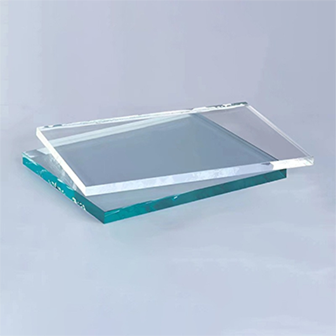Nov . 05, 2024 11:24 Back to list
infrared reflecting laminated glass
The Advantages of Infrared Reflecting Laminated Glass
In recent years, the demand for energy-efficient building materials has surged, driven by the growing need for sustainable architecture and environmental conservation. One innovative solution that has emerged in this context is infrared reflecting laminated glass. This advanced glazing technology not only enhances energy efficiency but also provides a range of added benefits that cater to modern architectural needs.
Infrared reflecting laminated glass is specifically designed to reduce the transmission of infrared light while still allowing visible light to pass through. This feature is crucial in controlling indoor temperatures and improving comfort levels within buildings. By reflecting a significant portion of infrared radiation, this type of glass keeps spaces cooler during hot summer months, thereby reducing the reliance on air conditioning systems. Consequently, buildings utilizing infrared reflecting laminated glass can achieve significant energy savings, minimizing carbon footprints and operational costs.
Another advantage of this innovative glazing solution is its contribution to occupant comfort. By mitigating excessive heat gain from sunlight, infrared reflecting laminated glass helps create a more pleasant indoor environment. This is particularly beneficial in commercial buildings and residential spaces that experience a high level of solar exposure. Occupants enjoy consistent temperatures without the discomfort caused by hot zones near windows, leading to increased productivity and overall satisfaction.
infrared reflecting laminated glass

Safety and security are also paramount in building design, and laminated glass excels in this regard. The fact that it is composed of multiple layers bonded together with a durable interlayer means that it is significantly tougher than standard glass. In the event of breakage, the shards remain adhered to the interlayer, reducing the risk of injury. This makes infrared reflecting laminated glass an excellent choice for both residential and commercial applications where safety is a priority. Additionally, the enhanced impact resistance can deter potential intruders, thereby providing an extra layer of security.
Beyond practical benefits, infrared reflecting laminated glass also offers aesthetic advantages. Available in various finishes and tints, it can be tailored to complement the architectural style of any building. This versatility allows architects and designers to create sleek, modern facades that enhance a building's visual appeal without compromising on performance. The ability to control glare while still allowing natural daylight to enter spaces is particularly valuable, as it creates a welcoming and bright atmosphere without the discomfort of overwhelming sunlight.
Furthermore, the environmental benefits of using infrared reflecting laminated glass cannot be overlooked. By decreasing energy consumption, buildings can contribute significantly to reducing greenhouse gas emissions. The reduction in energy use not only supports sustainability efforts but also aligns with global initiatives aimed at combating climate change. As more construction projects seek to achieve green certifications, the demand for materials such as infrared reflecting laminated glass will continue to grow.
In conclusion, infrared reflecting laminated glass represents a significant advancement in building materials, offering a potent combination of energy efficiency, comfort, safety, and aesthetic appeal. Its ability to reflect infrared radiation while allowing visible light to permeate spaces makes it an ideal choice for contemporary architecture. As the construction industry moves toward more sustainable practices, the importance of innovative materials like infrared reflecting laminated glass will only increase, paving the way for a greener and more energy-efficient future. In embracing this technology, architects, builders, and consumers alike can contribute to a more sustainable world while enjoying the myriad benefits that come from its incorporation into buildings.
-
Safety and Style with Premium Laminated Glass Solutions
NewsJun.24,2025
-
Reinvents Security with Premium Wired Glass
NewsJun.24,2025
-
Premium Float Glass Line for Modern Architecture
NewsJun.24,2025
-
Low Emissivity Glass for Energy-Efficient Architecture
NewsJun.24,2025
-
High-Performance Insulated Glass Solutions for Modern Architecture
NewsJun.24,2025
-
Elevates Interior Style with Premium Silver Mirror
NewsJun.24,2025
Related PRODUCTS














